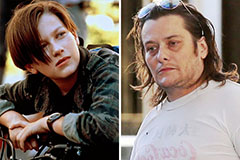See This Report on Uv/vis/nir
Table of ContentsFascination About Uv/visSee This Report about SpectrophotometersSome Known Questions About Uv/vis.How Circular Dichroism can Save You Time, Stress, and Money.The Only Guide for Uv/visTop Guidelines Of SpectrophotometersSpectrophotometers Things To Know Before You BuySpectrophotometers - TruthsThe 9-Minute Rule for Uv/vis10 Simple Techniques For Circular DichroismThe Ultimate Guide To Uv/visThe Main Principles Of Uv/vis/nir Uv/vis/nir Fundamentals Explained
It is then scanned through the sample and the reference services. Fractions of the occurrence wavelengths are transmitted through, or reflected from, the sample and the recommendation. Electronic circuits transform the relative currents into direct transmission portions and/or absorbance/concentration values.The transmission of a reference compound is set as a standard (information) worth, so the transmission of all other substances are tape-recorded relative to the initial "zeroed" compound. The spectrophotometer then converts the transmission ratio into 'absorbency', the concentration of specific components of the test sample relative to the initial compound.
Given that samples in these applications are not readily available in big quantities, they are particularly suited to being evaluated in this non-destructive technique. In addition, valuable sample can be saved by using a micro-volume platform where just 1u, L of sample is needed for complete analyses. A brief description of the procedure of spectrophotometry consists of comparing the absorbency of a blank sample that does not contain a colored compound to a sample which contains a colored substance.
Some Known Facts About Circularly Polarized Luminescence.
In biochemical experiments, a chemical and/or physical residential or commercial property is picked and the treatment that is utilized is particular to that residential or commercial property in order to derive more information about the sample, such as the quantity, pureness, enzyme activity, etc. Spectrophotometry can be used for a number of methods such as determining ideal wavelength absorbance of samples, determining ideal p, H for absorbance of samples, figuring out concentrations of unknown samples, and identifying the p, Ka of numerous samples.: 21119 Spectrophotometry is also a handy process for protein purification and can also be used as a technique to produce optical assays of a substance.
It is possible to know the concentrations of a 2 component mixture utilizing the absorption spectra of the basic solutions of each element. To do this, it is essential to understand the extinction coefficient of this mix at two wave lengths and the termination coefficients of services which contain the known weights of the two elements.

Little Known Facts About Circularly Polarized Luminescence.
Area. The concentration of a protein can be approximated by measuring the OD at 280 nm due to the presence of tryptophan, tyrosine and phenylalanine.
Nucleic acid contamination can also interfere. This approach needs a spectrophotometer capable of determining in the UV area with quartz cuvettes.: 135 Ultraviolet-visible (UV-vis) spectroscopy involves energy levels that excite electronic transitions. Absorption of UV-vis light thrills molecules that are in ground-states to their excited-states. Noticeable region 400700 nm spectrophotometry is utilized extensively in colorimetry science.
These curves can be utilized to test a new batch of colorant to inspect if it makes a match to specs, e
Traditional visible conventional noticeable can not detect if spot colorant or the base material has product. This can make it difficult to handle color concerns if for example one or more of the printing inks is fluorescent. There are 2 significant setups for visual spectrum spectrophotometers, d/8 (round) and 0/45.
Scientists utilize this instrument to measure the amount of compounds in a sample. If the compound is more focused more light will be taken in by the sample; within small ranges, the Beer, Lambert law holds and the absorbance in between samples differ with concentration linearly. When it comes to printing measurements 2 alternative settings are frequently utilized- without/with uv filter to control better the impact of uv brighteners within the paper stock.
Uv/vis/nir Can Be Fun For Everyone
Some applications require small volume measurements which can be performed with micro-volume platforms. As described in the applications section, spectrophotometry can be used in both qualitative and quantitative analysis of DNA, RNA, and proteins. Qualitative analysis can be used and spectrophotometers are used to tape-record spectra of compounds by scanning broad wavelength areas to figure out the absorbance homes (the strength of the color) of the substance at each wavelength.

8 Easy Facts About Spectrophotometers Explained
One major element is the kind of photosensors that are offered for different spectral regions, but infrared measurement is likewise tough because virtually everything discharges IR as thermal radiation, specifically at wavelengths beyond about 5 m. Another issue is that quite a few materials such as glass and plastic absorb infrared, making it incompatible as an optical medium.
Samples for IR spectrophotometry may be smeared between two discs of potassium bromide or ground with potassium bromide and pressed into a pellet. Where aqueous options are to be measured, insoluble silver chloride is used to construct the cell. Spectroradiometers, which operate almost like the noticeable area spectrophotometers, are designed to measure the spectral density of illuminants. Retrieved Dec 23, 2018. Basic Lab Techniques for Biochemistry and Biotechnology (Second ed.). The vital guide to analytical chemistry.
Chichester, NY: Wiley. pp. 1617. ISBN 9780471974123. OCLC 36543293. Ninfa AJ, Ballou DP (2004 ). Fundamental laboratory approaches for biochemistry and biotechnology. Hoboken: Wiley. p. 66. ISBN 9781891786006. OCLC 633862582. Rendina G (1976 ). Philadelphia, PA: W. B. Saunders Company. pp. 46-55. ISBN 0721675506. OCLC 147990. Oke, J. B.; Gunn, J. E.
The smart Trick of Circular Dichroism That Nobody is Discussing
"Secondary standard stars for absolute spectrophotometry". The Astrophysical Journal. 266: 713. Bibcode:1983 Ap, J..266..713 O. doi:10. 1086/160817. Ishani, G (2006 ). "The very first industrial UV-vis spectrophotometer". p. 100. Retrieved Dec 23, 2018. Simoni, RD; Hill, RL; Vaughan, M; Tabor, H (Dec 5, 2003). "A Traditional Instrument: The Beckman DU Spectrophotometer and Its Creator, Arnold O.
278 (49 ): e1. doi:. ISSN 1083-351X. Beckman, A. O.; Gallaway, W. S.; Kaye, W.; Ulrich, W. F. (March 1977). "History of spectrophotometry at Beckman Instruments, Inc". Analytical Chemistry. 49 (3 ): 280A300A. doi:10. 1021/ac50011a001. "Hewlett Packard: Substance Recognition with HP 8450 A UV Visible Spectrophotometer". Analytical Chemistry. 51 (12 visit this web-site ): 1188A1189A. 1979-10-01.
1021/ac50048a728. ISSN0003-2700. Ninfa AJ, Ballou DP, Benore M (2015 ). Essential Laboratory Approaches for Biochemistry and Biotechnology (3, rev. ed.). Hoboken, NJ: Wiley & Sons. p. 77. ISBN9780470924525. OCLC915641828. "Completely Automatic Double Beam - Atomic Absorption Spectrophotometer (AA 8000)". Laboratory Equipment. Labindia Analytical Instruments Pvt. Ltd. "Spectrophotometry Applications and Principles".
Not known Incorrect Statements About Circularly Polarized Luminescence
Retrieved Jul 4, 2018. Trumbo, Toni A.; Schultz, Emeric; Borland, Michael G.; Pugh, Michael Eugene (April 27, 2013). "Applied Spectrophotometry: Analysis of a Biochemical Mixture". Biochemistry and Molecular Biology Education. 41 (4 ): 24250. doi:10. 1002/bmb. 20694. PMID 23625877. (PDF). www. mt.com. Mettler-Toledo AG, Analytical. 2016. Recovered Dec 23, 2018. Cortez, C.; Szepaniuk, A.; Gomes da Silva, L.
"Exploring Proteins Filtration Strategies Animations as Tools for the Biochemistry Teaching". Journal of Biochemistry Education. 8 (2 ): 12. doi:. Garrett RH, Grisham CM (2013 ). Biochemistry. Belmont, CA: Cengage. p. 106. ISBN 978-1133106296. OCLC 801650341. Holiday, Ensor Roslyn (May 27, 1936). "Spectrophotometry of proteins". Biochemical Journal. 30 (10 ): 17951803. doi:10. 1042/bj0301795.
PMID 16746224. Hermannsson, Ptur G.; Vannahme, Christoph; Smith, Cameron L. C.; Srensen, Kristian T.; Kristensen, Anders (2015 ). "Refractive index dispersion picking up using a range of photonic crystal resonant reflectors". Applied Physics Letters. 107 (6 ): 061101. Bibcode:2015 Ap, Ph, L. 107f1101H. doi:10. 1063/1. 4928548. S2CID 62897708. Mavrodineanu R, Schultz JI, Menis O, eds.
Uv/vis/nir Things To Know Before You Get This
U.S. Department of Commerce National Bureau of Standards special publication; 378. Washington, D.C.: U.S. National Bureau of Standards. p. 2. OCLC 920079.
The process begins with a regulated light that illuminates the evaluated sample. When it comes to reflection, as this light interacts with the sample, some is taken in or released. The produced light travels to the detector, which is examined, quantified, and presented as industry-standard color scales and indices.
Industry governing bodies normally define specific metrics for particular items, such as Tomato and Coffee indices. The simplified math looks like this: Where R is the reflection coefficient. All terms are assessed over the noticeable spectrum from 400 to 700 nm. When it comes to transmission, when the light engages with the sample, it is either soaked up, reflected, or transmitted.
4 Simple Techniques For Spectrophotometers
Examples consist of APHA (American Public Health Association) for watercolor and pureness analysis, ASTM D1500 for petrochemical color analysis, edible oil indices used in food, and color analyses of drinks. The streamlined math looks like this:. Where T is the transmission coefficient. All terms are assessed over the noticeable spectrum from 400 to 700 nm.
Image Credit: Matej Kastelic/ Dr. Arnold J. Beckman and his associates at the National Technologies Laboratories first developed the spectrophotometer in 1940. In 1935 Beckman established the company, and the discovery of the spectrophotometer was their most ground-breaking development. Dr. Bruce Merrifield, a Nobel prize-winning biochemist, specified that the invention of the spectrophotometer was "probably the most essential instrument ever developed towards the advancement of bioscience." Before the discovery of the spectrophotometer, chemical analyses took weeks to finish, with 25% precision.
3 Simple Techniques For Spectrophotometers
Over time, scientists kept enhancing the spectrophotometer style to improve its performance. The UV abilities of the model B spectrophotometer were improved by changing the glass prism with a quartz prism.
After 1984, double-beam versions of the gadget were designed. The addition of external software with the provision of onscreen displays of the spectra came in the 1990s. Generally, a spectrophotometer is comprised of two instruments, particularly, a spectrometer and a photometer. A fundamental spectrophotometer contains a source of light, a monochromator, a collimator for straight beam transmission, a cuvette to put a sample, and a photoelectric detector.
Facts About Spectrophotometers Uncovered
There are different kinds of spectrophotometers in different shapes and sizes, each with its own function or performance. A spectrophotometer identifies how much light is reflected by chemical elements. UV/Vis/NIR. It determines the difference in light strength based on the overall amount of light presented to a sample and the amount of light beam that travels through the sample solution
As per the instrument's design, the sample is put between the spectrometer and the photometer. After the light is gone through the sample, the photometer determines its strength and shows the reading. A spectrophotometer is used to determine the concentration of both colorless and colored solutes in an option. This instrument is used to determine the rate of a response.
 Edward Furlong Then & Now!
Edward Furlong Then & Now! Mara Wilson Then & Now!
Mara Wilson Then & Now! Keshia Knight Pulliam Then & Now!
Keshia Knight Pulliam Then & Now! Tiffany Trump Then & Now!
Tiffany Trump Then & Now! Shane West Then & Now!
Shane West Then & Now!